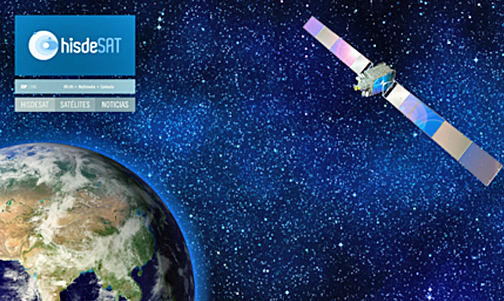

hisdesat, the Spanish government satellite services company, has signed an agreement with SpaceX to launch the Earth Observation Radar satellite, PAZ, on board a Falcon 9 rocket.
The launch is targeted to occur during the last quarter of 2017 from Space Launch Complex 4E at Vandenberg Air Force Base, California. The numerous successes of Falcon 9 have been a driving factor for the selection of Hisdesat to launch on board this rocket.

Artistic rendition of hisdeSAT's PAZ satellite.
The PAZ satellite incorporates as its main payload an active sensor with synthetic aperture radar (SAR) technology that provides images of different sizes and resolutions, both day and night, and regardless of weather conditions.This will allow for the provision of Earth Observation (EO) solutions for multiple applications, both government and commercial, including those requiring very high resolution images, below one meter.
The satellite will be able to take more than 100 images per day, delivering high resolution images covering an area of more than 300,000 square kilometers per day. It will make 15 revolutions a day around the Earth, at a height of 514 kilometers and with a speed of seven kilometers per second. Given its slightly inclined quasi-polar orbit, PAZ will cover the entire globe with a 24-hour mean revisit time.
In addition, as secondary payloads, the PAZ satellite will carry on board an ICE-CSIC Radio Occultation and Heavy Precipitation experiment (ROHP) and an AIS receiver from exactEarth, of which Hisdesat is the largest shareholder. This will be the first time that SAR (Synthetic Aperture Radar) and AIS data fusion are being simultaneously captured, allowing for the best possible monitoring of the maritime domain worldwide. Its total estimated weight is 1400 kg, measures 5m in height and has a 2.4m diameter.
The satellite's main contractor was Airbus Defence & Space and involved a consortium of 18 Spanish companies and universities. The owner of the ground segment is INTA, which has had as subcontractors a Spanish industrial group headed by INDRA, with GMV and DEIMOS, and the German DLR.
The PAZ satellite will be located in the same orbit as the German satellites TSX and TDX to form a SAR constellation, which will be exploited by Hisdesat and Airbus DS GEO, offering a shorter revisit time and greater number of images to clients. The PAZ satellite is part of the PNOTS National Earth Observation Satellite Program, with the Ingenio satellite (optical), led by the Ministry of Industry and the CDTI, being the other member of the aforementioned program.
hisdesat.es/

